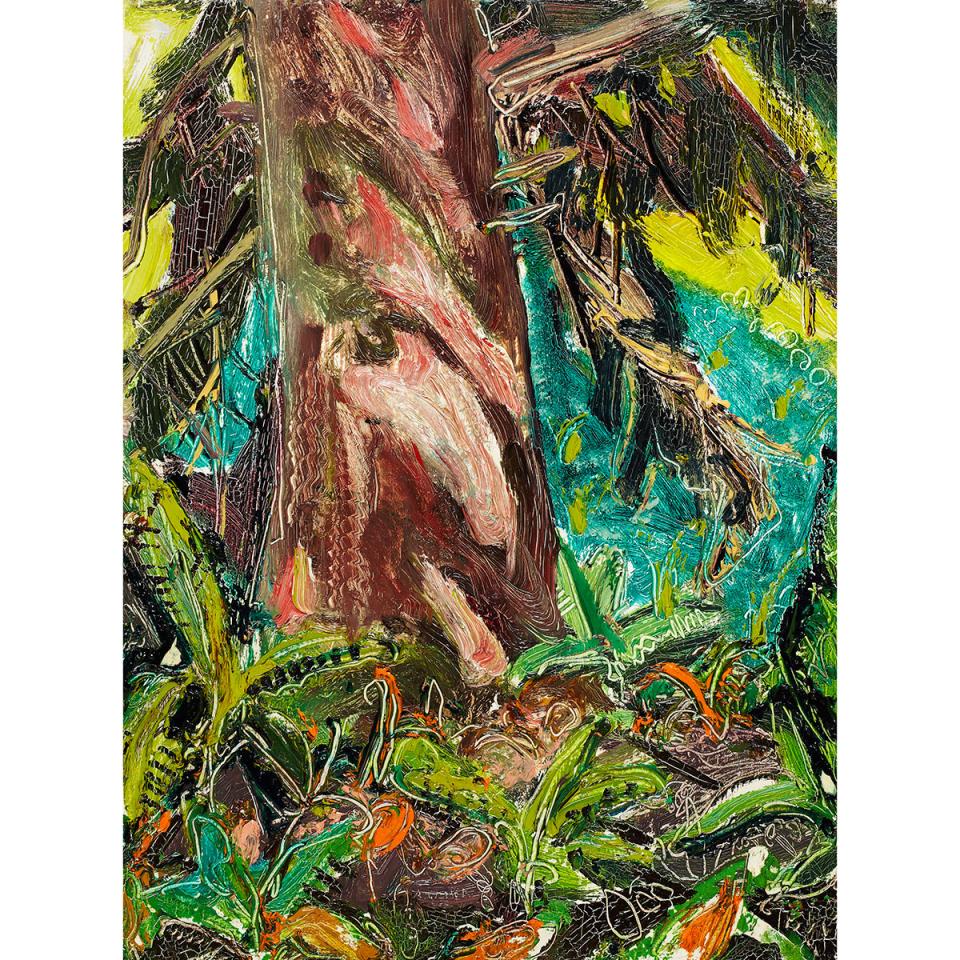Lot 43
ARTHUR LISMER, O.S.A., R.C.A.

Literature:
Lois Darroch, “Bright Land: A Warm Look at Arthur Lismer”, Toronto, 1981, pages 138 and 149.
Marjorie Lismer Bridges, “A Border of Beauty”, Toronto, 1977, pages 16-18.
Dennis Reid, “Canadian Jungle: The Later Work of Arthur Lismer”, Art Gallery of Ontario, Toronto, 1985, page 51.
Note:
After visiting Long Beach, Vancouver Island, in 1951, Lismer continued to visit the area for sixteen years. Long Beach provided 10 kilometres of forest-lined beach and hiking trails between Wickaninnish and Florencia Bays; plenty of lush woodland for Lismer to explore. Returning for the remoteness that the location offered, the Lismers would take the train from Montreal to Vancouver; Lismer cherished the seclusion of the five-day journey. This period in Lismer's life had led to a significant shift in his painting. “The Totem Tree at Long Beach” is a product of a renewed perspective Lismer gained in his later years. Lois Darroch writes, “Lismer was perspicacious enough to realize that the landscape art of the Group of Seven was not ‘old hat’ in a changing world, and he knew that he himself should change with it...His later work showed the sky pushed into ever lessening importance until it disappeared almost entirely with his interest in the foreground”. He was intrigued by “the details” since his very first encounter with Canadian landscape in 1914, writing of the “tall sombre trunks purple grey, and delicate branches interwoven in a marvelous intricacy of pattern” which he discovered in Algonquin Park. Although Lismer's writings focused on the particularities, it was not until years after the Group of Seven had disbanded that Lismer's paintings begin to show aspects often overlooked in Canadian landscape. Starting with the infamous “Canadian Jungle”, Lismer began to expose the richness and intensity of the forest. Incorporating a new subject that year, skunk cabbages, “The Totem Tree at Long Beach” is a vibrant concoction of colour and texture used to define the tree centred amongst what Dennis Reid calls “...floridly extravagant skunk cabbages that appear like grotesque efflorescence among the dead ferns and lesser flora of the forest floor”.


